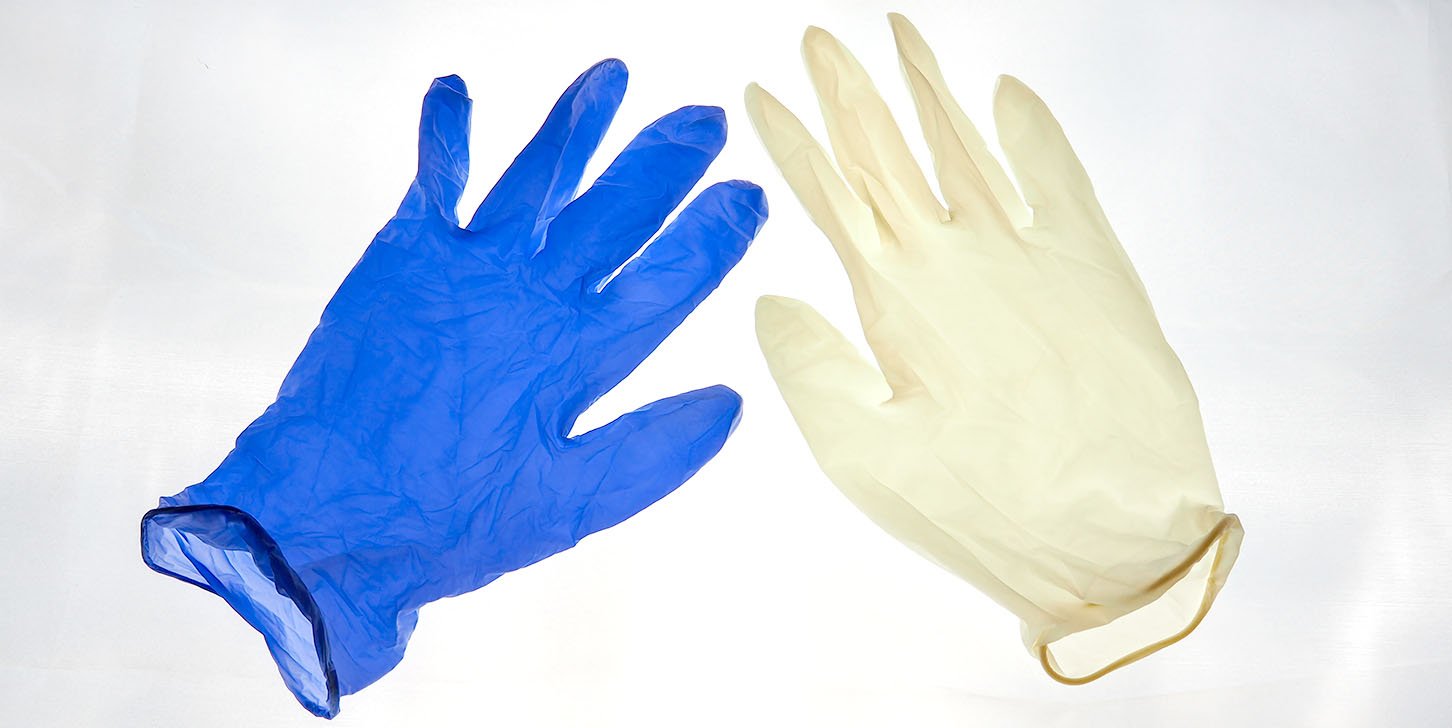
The best gloves to protect your hands from excessive water exposure, harsh chemicals, or other workplace dangers will vary by industry. The right gloves can also make it easier for you to do your job. Let’s look at three common glove materials, how they can protect you and which ones are best for different tasks. Vinyl, nitrile, and latex gloves all offer some level of hand protection in the workplace. Which one is right for you depends on what you are doing. Let’s take a closer look at the pros and cons of each type so that you can choose wisely when buying new gloves for your work, whether handling chemicals or working in a kitchen.
Nitrile Gloves
Nitrile gloves are made of synthetic rubber that is designed for high durability and strength. Thick nitrile gloves are excellent for handling heavy equipment, such as moving large machines in a factory setting. Medium-thickness nitrile glove is perfect for strenuous activities, including working in manufacturing, construction, gardening, and cleaning. While thin nitrile gloves are perfect for detail work like high-end food preparation, medical examination, and tattoo work. Nitrile gloves can also be helpful if you have allergies or sensitivity to latex. They are latex-free, and some are even accelerator-free, making them the best solution for people with severe allergies or Type IV hypersensitivity. They are not the best choice if you wear the gloves for hours and are doing water-related work as they do not have the same level of water resistance as latex or vinyl. However, they are excellent for short-time water-related work such as hair washing in a salon. It is important to note that not all nitrile gloves are great for food preparation as they may not be completely food safe. Always look for the food symbol, and read to what extent they are food safe before buying. Nitrile gloves come in various thicknesses and are available in powdered and unpowdered options.
Latex Gloves
Latex gloves are an excellent option for tasks where you need a high level of protection against water and chemicals. When latex gloves are put on correctly, they form a barrier that keeps out dirt and microbes. Where nitrile gloves are strong and durable, latex gloves are more flexible and excel in delicate tasks. You must handle latex gloves correctly to prevent tearing and ripping, as they are more sensitive than nitrile gloves. Latex gloves are great for handling food, laboratory work, and crafting. They are also suitable for handling chemicals and protecting your skin from irritants such as acids, alkalis, and other harsh substances. However, latex gloves are not suitable for work that requires heavy lifting.
Allergy warning: Latex gloves are made from natural rubber. Some people are very allergic to natural rubber latex, and in the worst case, natural rubber latex can cause anaphylactic responses.
Vinyl Gloves
Vinyl gloves are low-cost disposable gloves that are commonly used for food preparation. Vinyl gloves are treated with various chemicals to increase their water resistance. Vinyl gloves are available in different thicknesses and can be a good choice for light-duty tasks. However, they are unsuitable for heavy-duty work or protection against chemicals or microorganisms. Besides food preparation, vinyl gloves can be used for laboratory work, but keep in mind that they are not as soft and flexible to wear as nitrile and latex gloves. They are also a good option for light gardening work. Like most nitrile and latex gloves, vinyl gloves are disposable, meaning they are meant to be used once and thrown away afterward.
Which Is Best?
When comparing nitrile, latex, and vinyl gloves, selecting the correct type of glove for your particular situation is essential. While nitrile gloves are the premium choice due to its many qualities, some might prefer latex gloves because they are flexible, making them suitable for delicate tasks. Vinyl gloves are a budget alternative for food preparation and other light-duty activities. In our PROSENSO™ line of gloves, we cover the whole specter, and our specialists all always available to guide you in what type of gloves that suits your work.
How to Choose the Right Glove for the Job?
There are a few things to keep in mind when shopping for new gloves:
- Consider the level of protection that the gloves will provide for your hands.
- Think about where you will use the gloves.
- Choose gloves that are easy to put on and take off.
If you are looking for gloves that protect your hands from harsh chemicals and strong irritants, choosing the right type of glove to shield your skin from exposure is essential. Always look at the datasheet or the backside of the box before buying. These will provide you will essential knowledge about the protection levels of the gloves.
Conclusion
Gloves can protect your hands from harsh chemicals and other dangers in the workplace. The best gloves for you will vary depending on your needs. Choose nitrile gloves if you are looking for a premium solution for either delicate work or work that requires a high level of protection against chemicals, microorganisms, and other irritants. Choose latex gloves if you are sure you don’t have an allergy to natural rubber latex and need the most flexible glove for delicate tasks. Choose vinyl gloves if you are looking for a budget glove that is water resistant and can be used for food preparation. With suitable gloves on your hands, you will stay protected from hazardous substances encountered throughout the day, whether these substances are plain water or harsh chemicals.
